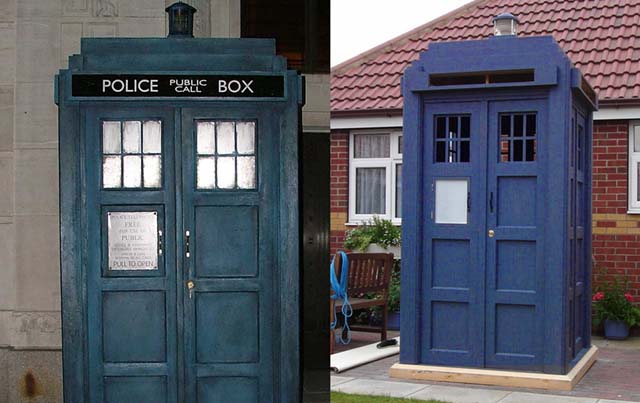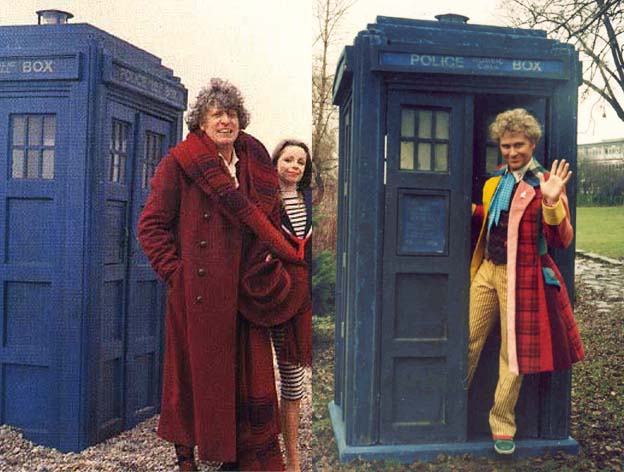Occurs to me, the best way to structure a Lord of the Rings videogame is to make it from Frodo’s persective, and Frodo’s perspective alone. Everything else is spiralling around somewhere in the background, out of his control, adding to the atmosphere. Assuming this game were based on the movies rather than the books, it would begin, with no particular prologue, outside the Green Dragon. The player, as Frodo, would amble, slightly drunk, back to Bag End; Sam would be around to help show the way. If the player were to go too far off-track, Sam could say, in a comforting voice, “‘ere, Mister Frodo, you’ve had a bit too much. Best follow me.” And Frodo would stumble around and take a step back toward Sam, with a bit of an acquiescent shrug. Sam would leave the player at the gate to Bag End, maybe pushing a bit, allowing the player to trot up through the door and walk around a little before Gandalf jumps out of nowhere, scaring the player half to death, asking about the Ring.
Within the context of the game, the player of course has no idea what’s happening. Frodo mumbles to Gandalf something about how he thinks he left it in the chest over there; the camera moves to frame it, the player is left free to wander Bag End; Gandalf will start to grow irritated if the player doesn’t go straight to the chest and open it, though. Once open, Frodo automatically fumbles around and draws out the envelope; Gandalf snatches it away, the whole sequence plays. Eventually the player is left free to scramble around for a few moments (there’s an invisible timer of sorts — long enough to be sane, short enough that the player can’t take however long he wants; Gandalf starts to get impatient if the player takes too long) and take whatever in Bag End seems of use. If the player seems confused, Gandalf will bark out suggestions. “Take some food! And try that walking stick over there!” When the player is done, he goes to Gandalf. (If the player just dallies forever, Gandalf interrupts and says they’ve delayed long enough. He might shove a generic pile of stuff into Frodo’s hands.) There’s another short bit of discussion, before Sam gets yanked through the window. Then the game cuts to Gandalf and Frodo walking along the road, toward the edge of Hobbiton, Sam scampering behind, Gandalf berating him. Gandalf offers his advice, and the player is left alone.
From then on, it’s forward. The player isn’t allowed back into Hobbiton. (“No… no, I can’t go back now. I’m afraid it’s no longer safe.”) Otherwise, it’s mostly free reign all through the Shire. Not much will happen aside from exploration. The hobbits become visibly exhausted and will begin to stagger if they don’t rest and eat from time to time. The general idea is to keep off the road, although it’s a good idea to keep the road in sight, lest the player become lost. Stray too far and you might have some strange run-ins; with wood elves or dwarves or even orcs. Sort of a Zelda or Dragon Quest idea of borders: although you can go anywhere, it’s on your own head if you act like a fool and stray far. Likewise, the farther from the path, the darker and more menacing the woods get; the greater the ambient noise. The game will send psychological signals, telling the player he shouldn’t be there (especially given the lack of any real means of self-defense except, perhaps, the occasional stone). Maybe if the player strays really, really far, Sam will be there to freak out and plead with Frodo to get back to the road.
The player probably won’t get actually killed or injured. He might be visibly (if subtly) stalked by wolves for a while. Just to give the player the hint. Perhaps if the player does get attacked, and injured a little, a ranger or a wood elf will pop out to slay the wolf and advise the player back to safety. Of course, if the player runs into someone on the road, that person will probably recognize Frodo and start making a big deal about it: “Why, FRODO BAGGINS, fancy seein’ you ‘ere! Why, wait until I tell the blokes at the pub who I ran across out in the middle of nowhere, why won’t they have a scream!” Frodo will automatically respond “Y…yes, nice to see you again. We’d really best be moving on.” “Oy, now that’s friendly! Well, have it as you will… (mutter mutter)” And the passerby would continue walking down the path. The idea is to give the player the idea that maybe he should avoid being recognized.
It will take a long while to walk from one place to the next; that’s a big part of the point. It’s all about the journey, about the sense of place along the way. Sense of distance. Sense of foreboding, as well. The idea that maybe the player is being watched. That the farther you get from home, the more treacherous the world feels, to a point. (This is before the wonder of travelling starts to really kick in, and when turning back still seems like a viable option, even if you know you can’t.)
Likewise, the game will somewhat funnel the player along the “right” path just by virtue of level design, carrots, and the above psychology. Farmer Maggot’s fields, say, will be the most obvious route to go, just because going any other route will be so unpleasant and slow, and Sam will whine so much, that it will in effect be the only viable option. If the player happens to miss Merry and Pippin one place, they will continue to wander around such that the player will meet them eventually, somehow, in some incidental manner. The level design will also ensure this. How the meeting transpires depends on the circumstances. If the player is being chased by black riders already, the dynamics will be different from if they bump into each other in a corn field or along the road.
As for the black riders: it should be immediately obvious to the player when they are coming — from visual, aural, and tactile cues. The idea is to make the player realize he really, really shouldn’t be where he is, and that he should get away and hide somewhere. It’ll be an ongoing menace for a while, keeping the player from standing around too long. If the player gets caught, maybe Merry and Pippin show up and pelt the rider with rocks, causing it to drop Frodo, and tell the player to follow them. Maybe the game is simply over right then and there. The rider rides off with Frodo, leaving Sam behind, weeping. And after a few moments, the screen fades to black, the player hears the sound of Frodo screaming, and the text “This is not the end…” appears.
The player should have the option to put on the ring at any time. Should be tempted. Perhaps when the Riders are near, the game interface does something to sugest to the player to use the item.
The game continues in this manner throughout the entire quest; things that are out of Frodo’s control are out of the player’s. The player is tempted and guided and manipulated just as Frodo is, all for the psychological effect. The idea is to make the player really feel like Frodo. To eventually confuse the hell out of him, and to make him want to take the easy way out of things.
I don’t see this game getting made. It wouldn’t be all that hard, of course. Not really. It’s certainly feasible. It’s just… not where we are, yet. Not how we think about videogames, yet. A shame, as I want to play it.



